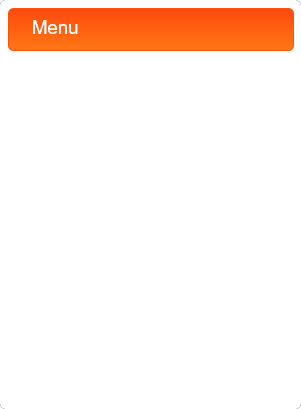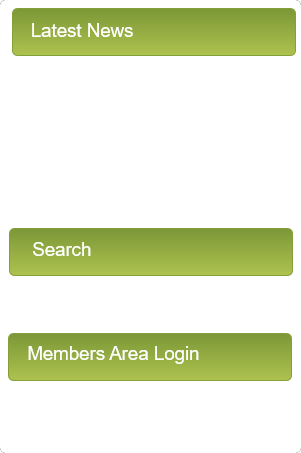New Zealand Roller Canary Club





THE NEW ZEALAND ROLLER CANARY.
All male canaries sing, but only some are bred for song. Canaries, were native to the Canary Islands, and were originally domesticated as a singing pet. Song breeders have concentrated on developing birds that sing more pleasant and freely than the wild canary. The ability to sing certain notes is inherited, but a young male canary may need to hear these notes sung by an older bird to learn them properly. The desirable characteristics for any song canary are free singing, length, variety (i.e. diversity), dynamic range, and good tone. Faults include short song, cut-offs (abrupt stops), harshness, shrill notes, and monotony.
At shows' the Roller canaries are judged on their singing ability. Show cages with doors are used and birds are entered by number so the judge does not know whose birds are being evaluated.
Canaries sing at daybreak, so this natural behaviour is used to train the birds for show. The doors are kept closed while waiting to be judged. When they are opened up, they have a set time to perform and are scored on a standard score sheet. 65-70 is considered a top score, out of a possible 100!
The Roller was developed in the Hartz Mountains region of Germany. This breed has been popular around the world for a couple of hundred years. Rollers are mostly green, yellow, white, or variegated.
The Roller is very quiet when it sings, so is not a bird for those with hearing problems.
THE TOURS OF THE ROLLER CANARY:
The song consists of ground sounds, these are produced from the vowels; A.E.I.O.U.
These renderings are given when the vowels O and U are heard, this is the highest value.
The Rollers song is delivered in 3 registers, Deep, Medium, and High. (Deep is the highest value.)
The song is made up with a series of Rolls and Tours, these are described with-out the use of so many vowels.
HOLLOW ROLL: This is known as the Queen of the rolls. As its name suggests, it is Hollow sounding and is the foundation of ALL Rolls and Tours. Hollow Roll can be delivered in different renderings, the best being the song with the ground sound of vowels, U, UO, or OO, with semi-vowel R, or RR, following through giving the Rolling effect.
There are various types known as Straight Hollow Roll, or a Fall Hollow Roll and a Rise and Fall Hollow Roll, and they can be delivered in different keys.
i.e. Listen carefully to the wind blowing through a Key Hole for the idea of the sound and delivery with the Rise and Fall.
BASS ROLL: This is the deepest part of the Roller's song and should be delivered with a closed beak to ensure a smooth running, purring or rolling sound very much like the purring of a cat; when sung like this, it is of high value. It can also be delivered with the beak opened which gives a harsh and hard sound and loses its value.
WATER GLUCKE TOUR: This is a double song passage, with a plausible beat of Glucke and an undertone of water.
i.e. Get a bottle of water and proceed to empty it into a deep container, this gives the desired sound with the beat of Glucke and the watery undertone.
GLUCKE TOUR: This is a simplified tour for the beginner to understand its delivery: the best Glucke is when the bird pronounces the word Glucke, it can also be delivered as Glock, Gluc-k's, Glok, and these are of little value.
GLUCKE ROLL: This is a deep roll with a ground tone of Bass with intermittent beats of Glucke connected with semi-vowel R. Thus, giving a continuous rolling effect.
i.e. The sound of an old fashioned two stroke motorcycle coming from a distance toward you and then going away from you. This will give you the required sound effect.
HOLLOW BELL TOUR: This should only be delivered in Two Registers. Deep or Medium tone. The best rendering is when the voice is changing from a deep Hollow Roll bringing the beat of a bell with the vowels O or U, and semi-vowel L, which give off a rendering of LUL-UL-UL or LOL-OL-OL.
FLUTES: Are mostly delivered when the bird is changing from one song passage to another, they may be sung in any of the 3 Registers. They are sung with plausible beats with the vowels A.O.U. The best value is when the delivery is smooth and deep and the consonant D or H is used as in DO-DO-DO or DAU-DAU-DAU or HOO-HOO-HOO, these are the most valuable renderings.
WATER ROLL: This song passage is delivered as water running over an uneven ground surface, thus, causing a ripple. A good example of this may be heard if a person stood by a stream and listened to the water running over a few cobble stones.
BELL ROLL: This song is delivered in the Top Register and is rendered with the vowel I and the semi-vowel R. This Roll often follows Hollow Roll, and sounds very much like the tinkling of a small bell, the vowel and semi-vowel are both equal tonality and should be softly delivered.
BELL TOUR: Very similar in tone and register as Bell Roll, but semi-vowel L is the more prominent, the vowel still being I, thus, giving a distinct beat on LIL-LIL-LIL, a good example is to hold a small bell in one hand, gently striking it with a small muffled hammer, you will then get the desired tone without the beat being too strong.
GENERAL EFFECT: This is scored on the bird's performance and delivery of the song.
FAULTS: These are deducted from the total score. (if sung). There are 6 recognised faults on a score sheet.
FEEDING YOUR ROLLER CANARY.
THE BASIC DIET: is a mixture of 30% Plain Canary to 70% Bird Rape seed. To retain the ability to sing a smooth song, the Roller needs a large amount of oily seed, hence the amount of Rape. Add very small amounts, of Hulled Oats. Linseed, Niger and Maw (poppy) fed separately. Daily greens or sprouting seed. Occasionally some egg-food.
GREENS; Seeding grasses together with roots and dirt, e.g. Milk Thistle, Chickweed, Puha, Dandelion, cultivated Rape Seed and Canary seed heads, Cabbage, Spinach, Kale, Nasturtium, Comfrey, Grated Carrot, cobs of Sweet-corn.
Lettuce and Apple can be fed, but sparingly, as these tend to make the birds scour.
WATER; This should be available at all times and kept scrupulously clean. Also provide a bath 2-3 times a week. (daily when they are moulting.)
GRIT: Oyster grit provides necessary calcium for bones etc. A small dish of fine pea metal/sand is needed for the gizzard to grind the food. This is the bird's teeth!!
EGG FOOD; Purchase a commercial egg food and mix with a little cooking oil, in a whizz, add some wheat germ to make a crumbly mix. Add Maw seed and keep in an air tight container. This mix does not go sour, so does not need replacing.
SPROUTING SEED; Soak some Rape, Radish, Wheat and Sunflower in water for 24 hrs. Wash in a strainer and place on a cloth in a colander to germinate. This could take 3-4 days, and you will need to rinse it daily. Feed to your birds when the seeds have just sprouted, as there is more goodness then, than at any other time. You need to make sure that no fungi etc. can grow, so it needs a final rinse. Take a 2lt milk bottle and add 1 cap full of Janola. Use a small amount to rinse and then re-rinse with plain water.
SELECTING BREEDING STOCK:
A key consideration is to breed for song from birds that have proven good tone characteristics.
Males should have a deep long Hollow and Bass Roll with good Flutes.
Females Rollers DO NOT SING BUT CARRY THE SONG STRUCTURE of their father and grandfather in their blood. Only through her offspring can a hen's song contribution be gauged, although a hen with a clear hollow-toned call, tends to denote quality breeding.
SELECTIVE LINE BREEDING (in-breeding) is recommended to ensure a steady improvement of song quality with stock that is stable and reproducible. Only the finest specimens in terms of health and vigour should be selected.
CROSS-BREEDING with different Roller strains may be adopted from time to time to improve certain song elements, free singing or other characteristics. A word of caution - once offspring with the sought after improvement have been produced the strain needs to be restabilised through line breeding - a process that may take some years.
Contact for further Roller Club information. dbbirch@clear.net.nz ph. 06 8436260






